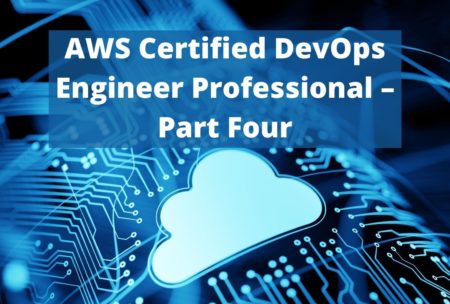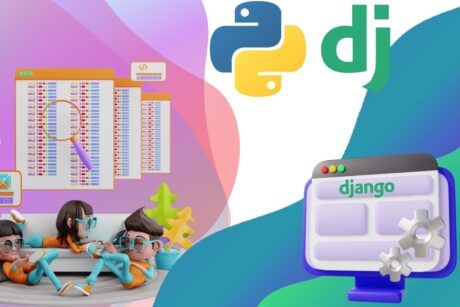This course is designed for those interested to learn the high availability and elasticity objectives, like auto scaling groups and distributing the load of incoming traffic across your servers, which covers about fifteen percent of the Amazon Web Services Certified Development and Operations Engineer Professional exam.
Read more.Instructor
Mclearn team was started in 2018 with a vision to empower people and businesses worldwide with great learning - any time, any place and on any device.
Access all courses in our library for only $9/month with All Access Pass
Get Started with All Access PassBuy Only This CourseAbout This Course
Who this course is for:
- Experienced AWS cloud engineers looking to pass the AWS Certified DevOps Engineer Professional certification (DOP-C01)
- Experienced AWS cloud engineers looking to learn advanced automations and features on the AWS cloud
What you’ll learn:
- Architecting applications for high availability and scalability
- The concepts of eliminating single points of failure
- Building boostly coupled architectures with disposable resources
- Understanding the principles of elasticity and scalability
- Working with auto scaling, such as how to implement elastic low bouncers and how to set up auto scaling groups with launch configurations
- How to scale computer resources dynamically or on a schedule
- Implementing scalable and highly available databases
- Setting up multi easy deployments with the Amazon relational database service
- How to scale vertically and horizontally with Relational Database Service (RDS)
- How to use the Amazon DynamoDB service, which is another news database service available from Amazon Web Services (AWS)
- An end to end example of building highly available and elastic architecture with a web application and database
Requirements:
- It’s recommended that you have some familiarity with Amazon Web Services operations or development
- This is the fourth course in a series. Take Amazon Web Services Certified Development And Operations Engineer Professional – Parts One to Three.
In this course, you’ll learn best practices and patterns for building highly available architectures and implementing auto scaling groups. This final domain on high availability and elasticity covers 15% of the questions that you’re going to see on the Amazon Web Services (AWS) Certified Development Operations Engineer Professional exam.
Our Promise to You
By the end of this course, you will have learned best practices and patterns for building highly available architectures and implementing auto scaling groups.
10 Day Money Back Guarantee. If you are unsatisfied for any reason, simply contact us and we’ll give you a full refund. No questions asked.
Get started today and learn more about the high availability and elasticity objectives for the Amazon Web Services Certified Development and Operations Engineer Professional exam.
Course Curriculum
| Section 1 - Introduction | |||
| Introduction | 00:00:00 | ||
| Understanding Elasticity And Scalability | 00:00:00 | ||
| Implementing Disposable Resources | 00:00:00 | ||
| Loosely Coupled Architectures | 00:00:00 | ||
| Architecting With Services Instead Of Servers | 00:00:00 | ||
| Eliminating Single Points Of Failure | 00:00:00 | ||
| Section 2 - Understanding Auto Scaling | |||
| Creating An Elastic Load Balancer | 00:00:00 | ||
| Setting Up A Launch Configuration And Auto Scaling Group | 00:00:00 | ||
| Automatically Replacing Failed Instances | 00:00:00 | ||
| Scaling Dynamically Or On A Schedule | 00:00:00 | ||
| Launching Spot Instances In Auto Scaling Groups | 00:00:00 | ||
| Implementing Life Cycle Hooks | 00:00:00 | ||
| Creating Self Healing Auto Scaling Groups | 00:00:00 | ||
| Section 3 - Implementing Scalable And Highly Available Databases | |||
| Overview Of Amazon RDS | 00:00:00 | ||
| Setting Up Amazon RDS Multi-AZ Deployments | 00:00:00 | ||
| Vertical And Horizontal Scale With Amazon RDS | 00:00:00 | ||
| Building Your Own Database Servers On EC2 | 00:00:00 | ||
| Getting Started With DynamoDB | 00:00:00 | ||
| DynamoDB Provisioned Throughput | 00:00:00 | ||
| Secondary Indexes In DynamoDB | 00:00:00 | ||
| Creating DynamoDB Tables | 00:00:00 | ||
| Section 4 - Deploying A Highly Available And Elastic Architecture | |||
| What We’re Going To Build | 00:00:00 | ||
| Setting Up A Virtual Private Cloud VPC | 00:00:00 | ||
| Creating A Database Tier For The App | 00:00:00 | ||
| Defining The Launch Configuration | 00:00:00 | ||
| Setting Up A Load Balancer And Auto Scaling Group | 00:00:00 | ||
| Validating The Deployment | 00:00:00 | ||
| Series Wrap Up And Next Steps | 00:00:00 | ||




